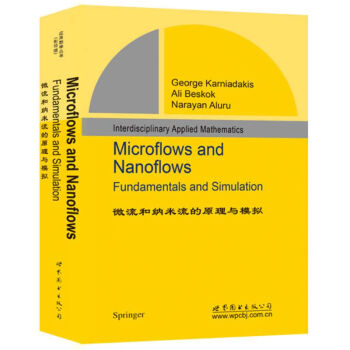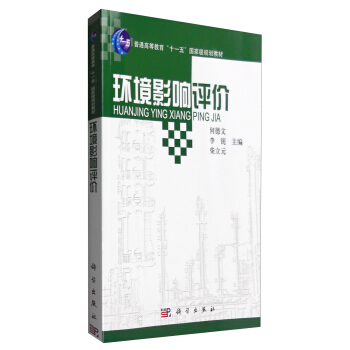![国外数学名著系列(续一 影印版)55:几何I 微分几何基本思想与概念 [Geometry 1 Basic Ideas and Concepts of Differential Geometry]](https://pic.tinynews.org/11925925/5773bd7eN1fba0575.jpg)

具体描述
内容简介
Since the early work of Gauss and Riemann, differential geometry has grown into a vast network of ideas and approaches, encompassing local considerations such as differential invariants and jets as well as global ideas, such as Morse theory and characteristic classes: In this volume of the Encyclopaedia, the authors give a tour of the principal areas and methods of modern differential geometry. The book is structured so that the reader may choose parts of the text to read and still take away a completed picture ofsome area ofdifferential geometry Beginning at the introductory level with curves in Euclideanspace, the sections become more challenging. arriving finally at the advanced topics which form the greatest part of the book:transformation groups. the geometry of differential equations,geometric structures, the equivalence problem the geometry ofelliptic operators, G-structures and contact geometry. As an overview of the major current methods of differential geometry, EMS 28 is a map of these different ideas which explains the interesting points at every
stop, The authors' intention is that the reader should gain a new understanding of geometry from the process of reading this survey.
内页插图
目录
PrefaceChaptcr 1.Introduction:A Metamathematical View of Differential Geometry
1.Algebra and Geometry—theDuality of the Intellect
2.Two Examples:Algebraic Geometry,Propositional Logic and Set Theory
3.On the History of Geometry
4.Differential Calculus and Commutative Algebra
5.What is Differential Geometry?
Chapter2.The Geometry of Surfaces
1.Curves in Euclidean Space
1.1.Curves
1.2.The Natural Parametrization and the intrinsic Geometry of Curves
1.3.Curvature.The Frenet Frame
1.4.Affine and Unimodular Properties of Curves
2.Surfaces in E3
2.1.Surfaces Charts
2.2.The First Quadratic Form.The Intrinsic Geometry of a Surface
2.3.The Second Quadratic Form.The Extrinsic Geometry of a Surface
2.4.Derivation Formulae.The First and Second Quadratic Forms
2.5.The Geodesic Curvature of Curves Geodesics
2.6.Parallel Transport of Tangent Vectors on a Surface.Covariant Differentiation.Connection 2.7.Deficiencies of Loops,the“Theorema Egregium”of Gauss and the Gauss—Bonnet Formula 2.8.The Link Between the First and Second Quadratic Forms.
The Gauss Equation and the Peterson—Mainardi—Codazzi Equations
2.9.The Moving Frame Method in the Theory of Surfaces
2.10.A Complete System of lnvariants of a Surface
3.Multidimensional Surfaces
3.1.n—Dimensional Surfaces in En+p.
3.2.Covariant Differentiation and the Second Quadratic Form
3.3.Normal Connection on a Surface.The Derivation Formulae
3.4.The Multidimensional Version of the Gauss—Peterson Mainardi—Codazzi Equations.Ricci’sTheorem 3.5.The Geometrical Meaning and Algebraic Properties of the Curvature Tensor 3.6.Hypersurfaces.Mean Curvatures.The Fonnulae of Steiner and Weyl 3.7.Rigidity of Multidimensional Surfaces
Chapter 3.The Field Approach of Riemann
1.From the Intrinsic Geometry of Gauss to Riemannian Geometrv
1.1.The Essence of Riemann’s Approach
1.2.Intrinsic Description of Surfaces
1.3.The Field Point of View on Geometry
1.4.Two Examples
2.Manifolds and Bundles(the BasicConcepts)
2.1 Why Do We Need Manifolds?
2.2.Definition of a Manifold
2.3.The Category of Smooth Manifolds
2.4.Smooth Bundles
3.Tensor Fields and Differential Forms
3.1.Tangent Vectors
3.2.The Tangent Bundle and Vector Fields
3.3 Covectors,the Cotangent Bundle and Differential Forms of the First Degree 3.4.Tensors and Tensor Fields
3.5.The Behaviour of Tensor Fields Under Maps.The Lie Derivative
3.6.The Exterior Differential.The de Rham Complex
4.Riemannian Manifolds and Manifolds with a Linear COnnectiOn
4.1.Riemannian Metric
4.2.Construction of Riemannian Metrics
4.3.Linear Connections
4.4.Normal Coordinates
4.5.A Riemannian Manifold as a Metric Space Completeness
4.6.Curvature
4.7.The Algebraic Structure of the Curvature Tensor.The Ricci and Weyl Tensors and Scalar Curvature
4.8.Sectional Curvature.Spaces of Constant Curvature
4.9.The Holonomy Group and the de Rham Decomposition
4.10.The Berger—Claass—ification of Holonomy Groups·Kahler and Quaternion Manifolds.
5.The Geometry of Symbols
5.1.Differential Operators in Bundles
5.2.Symbols of Differential Operators
5.3.Connections and Quantization.
5.4.Poisson Bracketsand Hamiltonian Formalism
5.5.Poissonian and Symplectic Structures
5.6.Left.Invariant Hamiltonian Formalism on Lie Groups
Chapter 4.The Group Approach of Lie and Klein.The Geometry of Transformation Groups.
1.Symmetries in Geometry
1.1.Symmetries and Groups
1.2.Symmetry and Integrability
1.3.KIein’S Erlangen Programme.
2.Homogeneous Spaces
2.1.Lie Groups
2.2.The Action ofthe Lie Group on a Manifold
2.3.Correspondence Between Lie Groups and Lie Algebras
2.4.Infinitesimal Description of Homogeneous Spaces
2.5.The Isotropy Representation.Order of a Homogeneous Space
2.6.The Principle of Extension.Invariant Tensor Fields on Homogeneous Spaces
2.7.Primitive and Imprimitive Actions
3.Invariant Connections on a Homogeneous Space
3.1.A General Description
3.2.Reductive Homogeneous Spaces
3.3.Atline Symmetric Spaces
4.Homogeneous Riemannian Manifolds
4.1.Infinitesimal Description
4.2.Thc Link Between Curvature and the Structure of the GrouP of Motions
4.3.Naturally Reductive Spaces
4.4.Symmetric Riemannian Spaces
4.5.Holonomy Groups of Homogeneous Riemannian Manifolds
Kahlerian and Quaternion Homogeneous Spaces
5.Homogeneous Symplectic Manifolds
5.1.Motivation and Definitions
5.2.Examoles
5.3.Homogeneous Hamiltonian Manifolds
5.4.Homogeneous Symplectic Manifolds and Affine Actions
Chapter 5.The Geometry of Differential Equations
1.Elementary Geometry of a First—Order Differential Equation
1.1 Ordinary Differential Equations
1.2.The General Case.
1.3.Geometrical Integration
2.Contact Geometry and Lie’s Theory of First.Order Equations
2.1.Contact Structure on J1
2.2.Generalized Solutions and Integral Manifolds ofthe Contact Structure 2.3 Contact Transformations
2.4.Contact Vector Fields
2.5 The Cauchy Problem
2.6.Symmetries.Local Equivalence
3.The Geometry ofDistributions
3.1 Distributions
3.2.A Distribution of Codimension I.The Theorem Of DarbOux.
3.3.Involutive Systems of Equations
3.4.The Intrinsic and Extrinsic Geometrv of First_Order Differential Equations 4.Spaces ofJets and Differential Equations
4.1.Jets.
4.2.The Caftan Distribution
4.3 Lie Transformations
4.4 Intrinsic and ExtrinsicGeometries
5.The Theory of Compatibility and Formal Integrabilitv
5.1.Prolongations ofDifferential Equations
5.2.Formal Integrability
5.3.Symbols
5.4.The Spencer δ—Cohomology
5.5.Involutivity
6.Cartan’S Theory of Systems in Involution
6.1 PolarSystems,Characters and Genres
6.2.Involutivity and Cartan’S Existence Theorems
7.The Geometry of Infinitely Prolonged Equations
7.1.What is a Differential Equation?
7.2.Infinitely Prolonged Equations
7.3.C—Maps and Higher Symmetries
Chapter 6.Geometric Structures
1.GeometricQuantities and Geometric Structures
1.1 What is a Geometric Quantity?
1.2.Bundles of Frames and Coframes
1.3.Geometric Quantities(Structures)as Equivariant Functions
on the Manifold of Coframes
1.4.Examples.Infinitesimally Homogeneous Geometric Structures
1.5.Natural Geometric Structures and the Principle of Covanance
……
Chapter7.The Equivalence Problem,Differential Invariants and Pseudogroups
Chapter8.Global Aspects of Differential Geometry
Commentary on the References
References
Author Index
Subject Index
前言/序言
要使我国的数学事业更好地发展起来,需要数学家淡泊名利并付出更艰苦地努力。另一方面,我们也要从客观上为数学家创造更有利的发展数学事业的外部环境,这主要是加强对数学事业的支持与投资力度,使数学家有较好的工作与生活条件,其中也包括改善与加强数学的出版工作。科学出版社影印一批他们出版的好的新书,使我国广大数学家能以较低的价格购买,特别是在边远地区工作的数学家能普遍见到这些书,无疑是对推动我国数学的科研与教学十分有益的事。
这次科学出版社购买了版权,一次影印了23本施普林格出版社出版的数学书,就是一件好事,也是值得继续做下去的事情。大体上分一下,这23本书中,包括基础数学书5本,应用数学书6本与计算数学书12本,其中有些书也具有交叉性质。这些书都是很新的,2000年以后出版的占绝大部分,共计16本,其余的也是1990年以后出版的。这些书可以使读者较快地了解数学某方面的前沿,例如基础数学中的数论、代数与拓扑三本,都是由该领域大数学家编著的“数学百科全书”的分册。对从事这方面研究的数学家了解该领域的前沿与全貌很有帮助。按照学科的特点,基础数学类的书以“经典”为主,应用和计算数学类的书以“前沿”为主。这些书的作者多数是国际知名的大数学家,例如《拓扑学》一书的作者诺维科夫是俄罗斯科学院的院士,曾获“菲尔兹奖”和“沃尔夫数学奖”。这些大数学家的著作无疑将会对我国的科研人员起到非常好的指导作用。
当然,23本书只能涵盖数学的一部分,所以,这项工作还应该继续做下去。更进一步,有些读者面较广的好书还应该翻译成中文出版,使之有更大的读者群。
总之,我对科学出版社影印施普林格出版社的部分数学著作这一举措表示热烈的支持,并盼望这一工作取得更大的成绩。
用户评价
这本书最让我印象深刻的,是它所传递的那种对数学“纯粹性”的追求。它没有为了迎合读者而简化内容,也没有为了方便讲解而牺牲严谨性。书中对于拓扑学在微分几何中的作用的浅析,让我看到了不同数学分支之间的联系和相互促进。我开始理解,为什么数学家们会如此着迷于那些看似“无用”的抽象研究,因为正是这些抽象的理论,最终可能成为推动科学发展的重要基石。书中关于黎曼几何的初步介绍,虽然只是冰山一角,但已经足够让我感受到它在描述弯曲空间方面的巨大潜力。我甚至开始思考,这本书所涉及的那些概念,是否能在更广阔的领域,比如宇宙学、粒子物理学等中找到应用。这本书,像是一扇窗户,让我窥见了数学世界的深邃与辽阔,也激发了我进一步探索的渴望。它让我明白,真正的数学之美,在于其内在的逻辑自洽和对世界深刻的洞察。
评分读这本书的过程,与其说是“阅读”,不如说是“思辨”。它没有华丽的辞藻,也没有冗长的铺垫,直接将我置于微分几何的严谨逻辑之中。每一次的阅读,都像是在攀登一座陡峭的山峰,需要付出艰辛的努力,但每一次的登高,都能获得更开阔的视野。书中对曲率的概念的阐述,着实让我为之震撼。从高斯曲率到平均曲率,再到主曲率,这些看似抽象的量,却能如此精准地描述一个曲面的局部弯曲程度,甚至预示着它在大范围内的形状。我开始理解,为什么物理学中的广义相对论会如此依赖于微分几何,因为正是这些对空间几何性质的精确描述,才能描绘出引力场与时空弯曲之间的深刻联系。书中那些看似冗长的公式推导,其实蕴含着深刻的数学洞察力,每一次符号的变换,都指向着更深层次的几何意义。它让我深刻体会到,数学的强大力量在于其抽象能力,而微分几何正是这种抽象力量的集中体现。这本书,无疑是对我数学思维的一次彻底洗礼,让我对“几何”二字有了全新的认识。
评分坦白说,这本书给我的感觉更像是一位循循善诱的导师,而非简单的知识灌输者。它不疾不徐地引领我走进微分几何的世界,从最基础的曲线和曲面出发,逐步深入到更抽象的概念。书中对于微分形式的介绍,起初让我觉得有些超乎我的认知范围,但当我理解了它在积分、外微分等方面的强大作用后,我才恍然大悟。原来,这些看似繁复的数学语言,是为了更简洁、更本质地表达几何信息。它让我看到了,数学是如何从具体走向抽象,又如何从抽象回到具体的。我被书中那种探索未知、挑战极限的精神所打动,它鼓励我不要畏惧复杂的数学表达式,而是要去深入理解它们背后的逻辑和含义。我甚至在想,如果当初在学习微积分的时候,就能接触到这样的视角,或许我会对数学产生更浓厚的兴趣。这本书,不仅仅是关于微分几何的知识,更是关于如何进行数学思考的一种范式。
评分拿到这本书的时候,我并没有抱有太高的期望,以为这仅仅是一本普通的数学参考书。然而,随着阅读的深入,我逐渐被书中那股严谨而又充满智慧的数学气息所吸引。它并非简单地罗列定理和公式,而是试图构建一种对微分几何基本概念的深刻理解。书中关于张量分析的引入,虽然起初让我感到有些吃力,但随着对它在微分几何中作用的理解加深,我才意识到它的重要性。张量,这个看似复杂的数学工具,却是描述几何对象在坐标变换下不变性质的关键。理解了张量,就如同掌握了理解更复杂几何结构的钥匙。我开始体会到,数学家们是如何通过抽象和一般化,将一个个具体的几何问题,升华为普适性的数学原理。这本书没有回避困难,反而积极地引导我去面对和解决它们。每一次对书中概念的理解,都像是在智力上进行了一次成功的“突破”。我不再仅仅是机械地记忆公式,而是开始思考公式背后的几何意义,理解它为何如此,以及它能用来做什么。
评分初次翻开这本《几何I 微分几何基本思想与概念》,我本以为会是一本轻松易懂的入门读物,却没想到它深邃的内涵和严谨的论证方式,瞬间将我带入了一个充满挑战但又引人入胜的数学世界。书中对于曲面和空间的理解,并非停留在直观的想象,而是通过精妙的数学语言,将那些抽象的几何对象具象化,仿佛为我开启了一扇通往更高维度几何空间的窗户。我尤其被书中关于测地线的探讨所吸引,它不仅是欧氏空间中直线概念的自然推广,更在非欧几何中展现出其独特的魅力,勾勒出大自然运动轨迹的数学本质。每一次公式的推导,每一次定理的证明,都像是一次精细的手术,剥离掉表面的浮躁,直抵几何问题的核心。我甚至可以想象到,当那些伟大的数学家们在黑板前,用粉笔勾勒出复杂的曲线时,脑海中闪过的便是这些最基本、最核心的思想。这本书的价值,不在于提供了现成的答案,而在于它引导我去思考“为什么”,去探索数学的脉络,去感受几何之美。它并非一本我可以轻易“读完”的书,而更像是一个需要我反复品味、深入钻研的伙伴。
相关图书
本站所有内容均为互联网搜索引擎提供的公开搜索信息,本站不存储任何数据与内容,任何内容与数据均与本站无关,如有需要请联系相关搜索引擎包括但不限于百度,google,bing,sogou 等
© 2025 book.tinynews.org All Rights Reserved. 静思书屋 版权所有

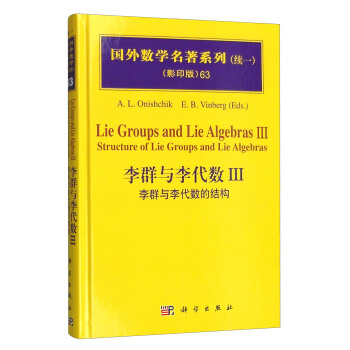


![国外数学名著系列(续一 影印版)62:李群与李代数Ⅱ 李群的离散子群,李群与李代数的上同调 [Lie Groupa and Lie Algebras Ⅱ Discrete Subgroups of Lie Groups and Cohomologies of Lie Groups and Lie Algebras] pdf epub mobi 电子书 下载](https://pic.tinynews.org/11952010/5773bd86N8e37b0c1.jpg)

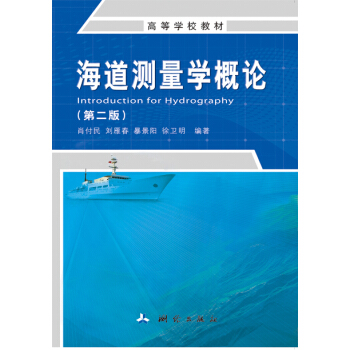




![中国人群暴露参数手册(儿童卷 0-5岁) [Exposure Factors Handbook Of Chinese Population: Children: 0-5 Years] pdf epub mobi 电子书 下载](https://pic.tinynews.org/11984831/57fa2272Nce05371a.jpg)


![数值分析(第2版 英文版) [Numerical Analysis (Second Edition)] pdf epub mobi 电子书 下载](https://pic.tinynews.org/11990006/578dfab8N841ec4fb.jpg)
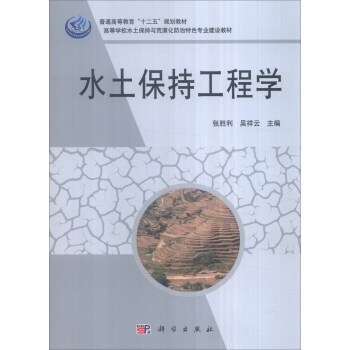
![毒蘑菇识别与中毒防治 [Poisonous Mushrooms:Recognition and Poisoning Treatment] pdf epub mobi 电子书 下载](https://pic.tinynews.org/12003436/57c95562N8dd3837e.jpg)
